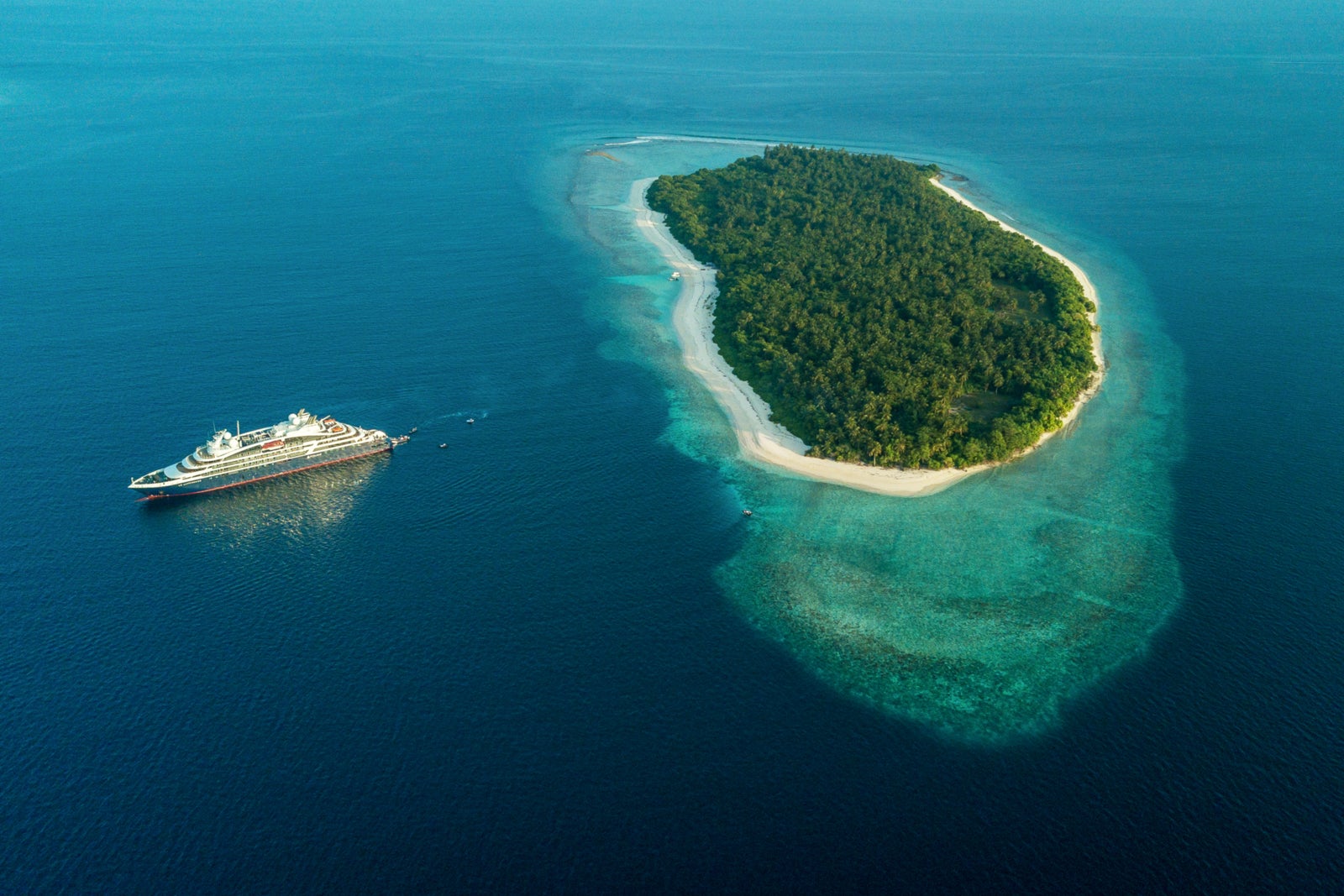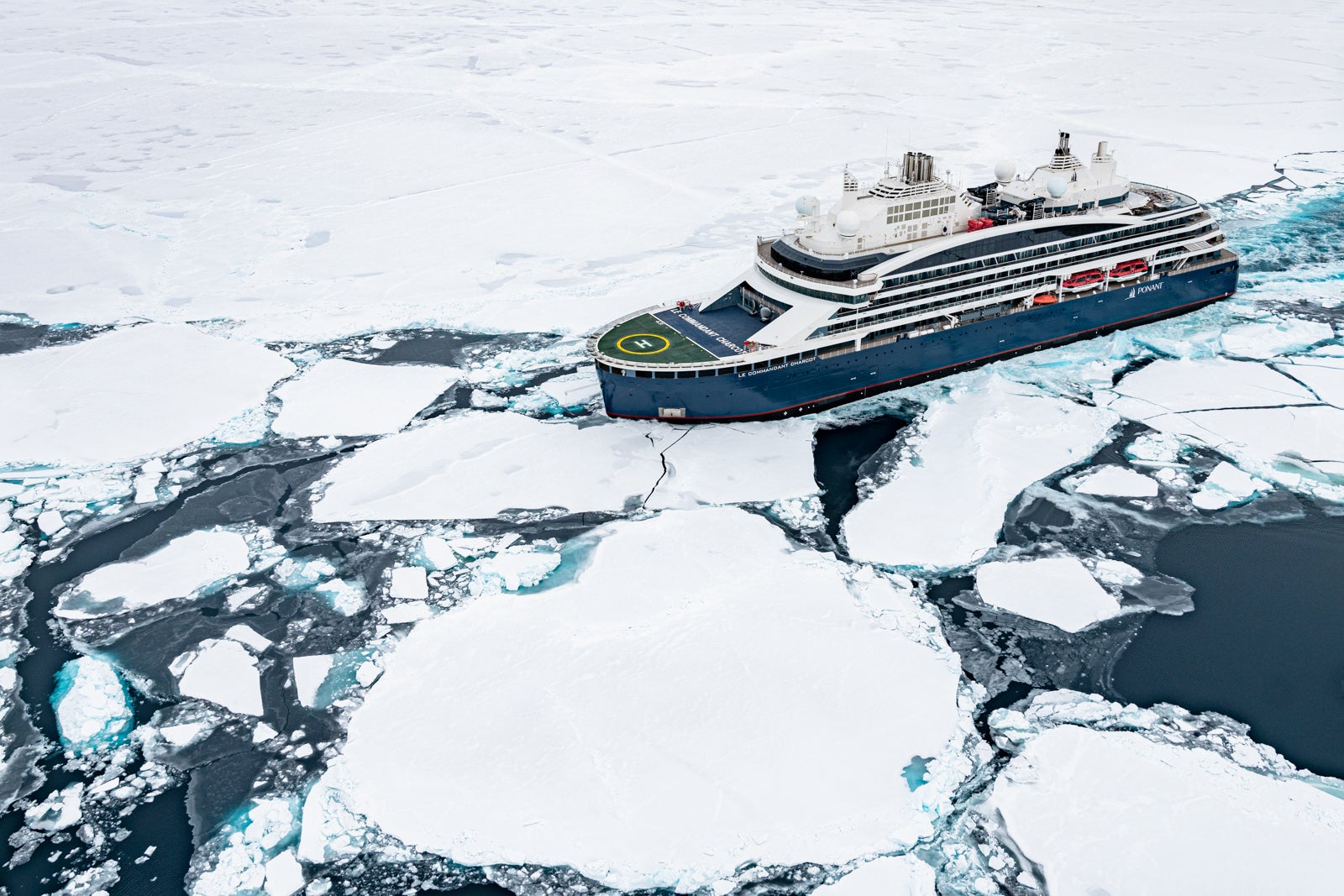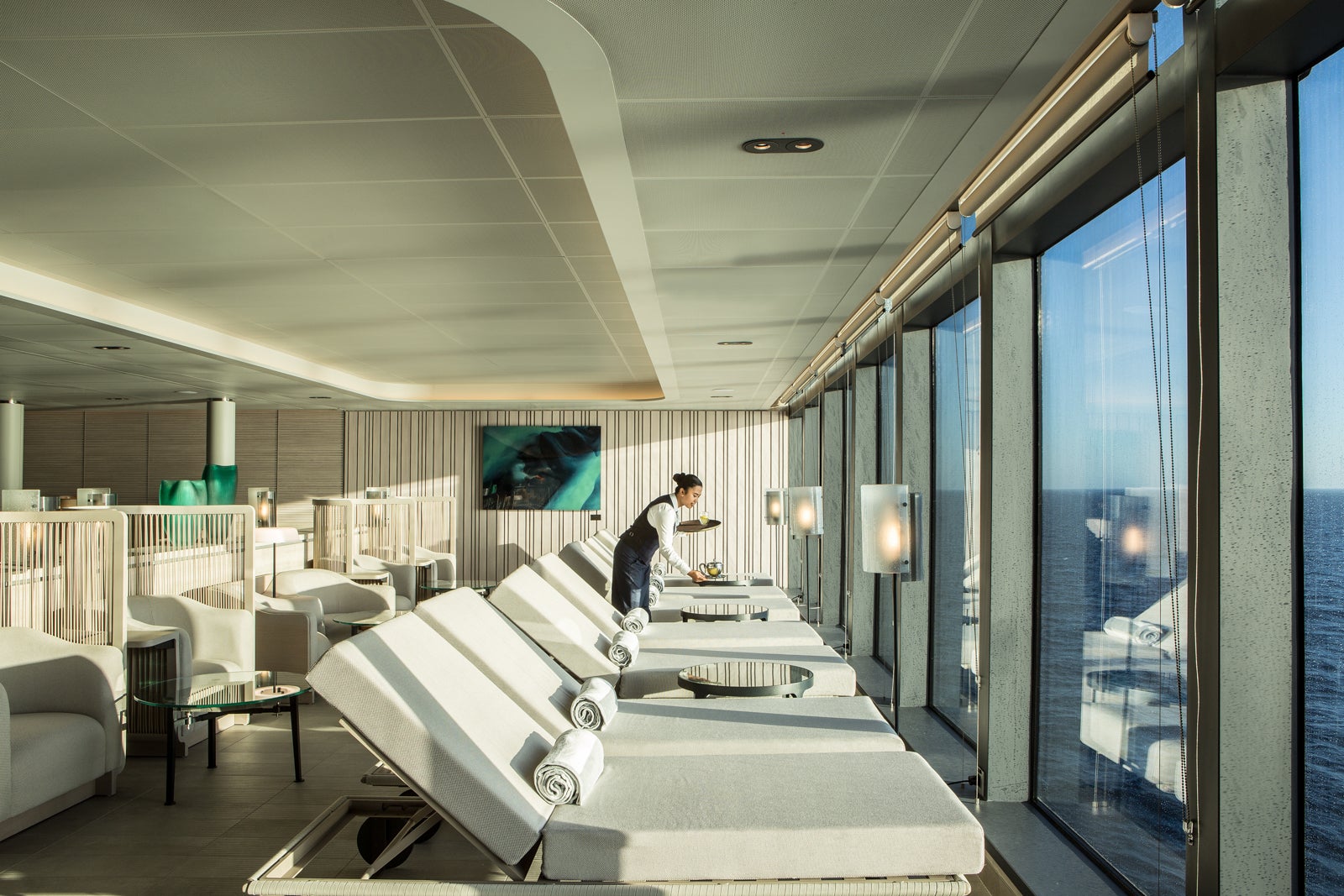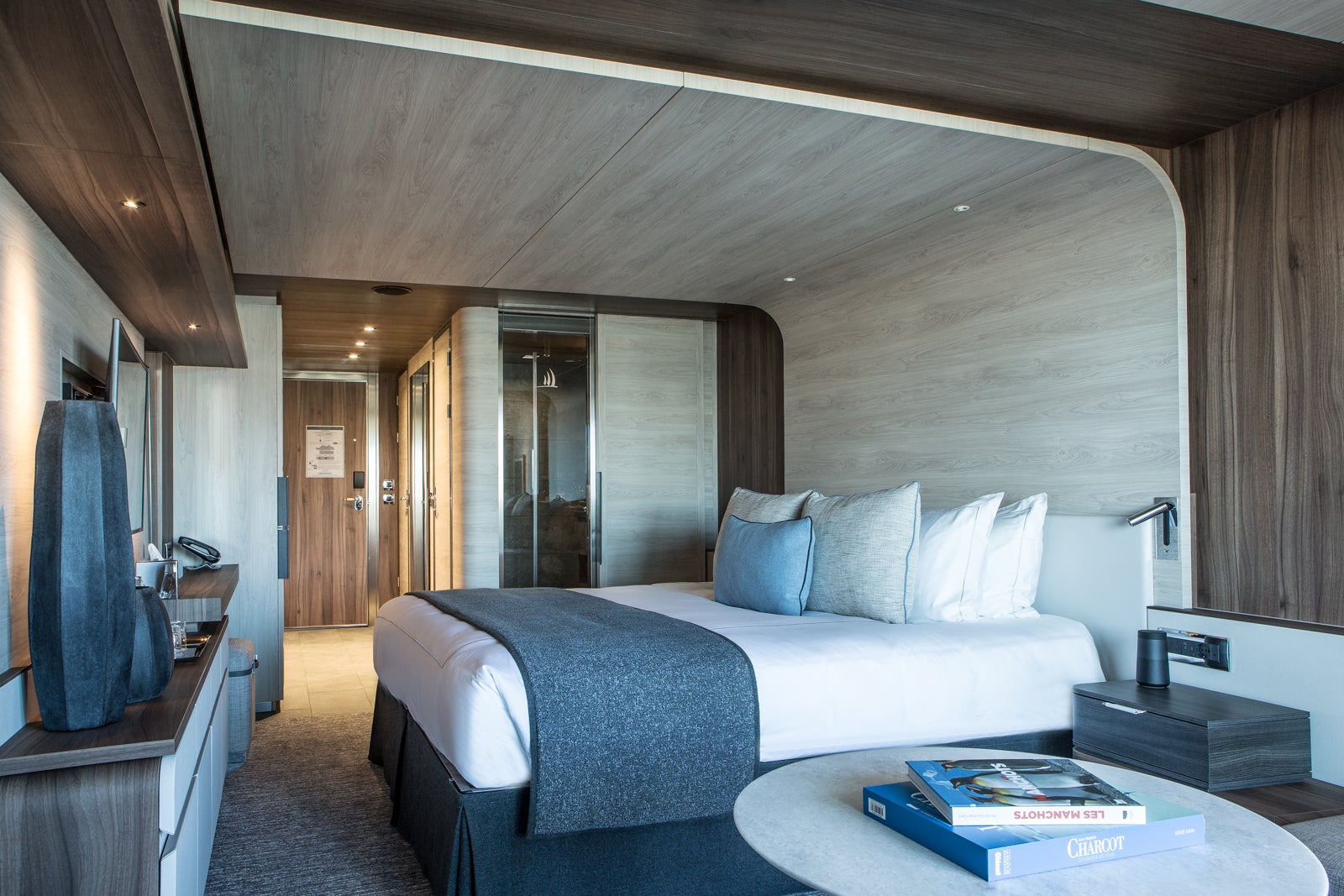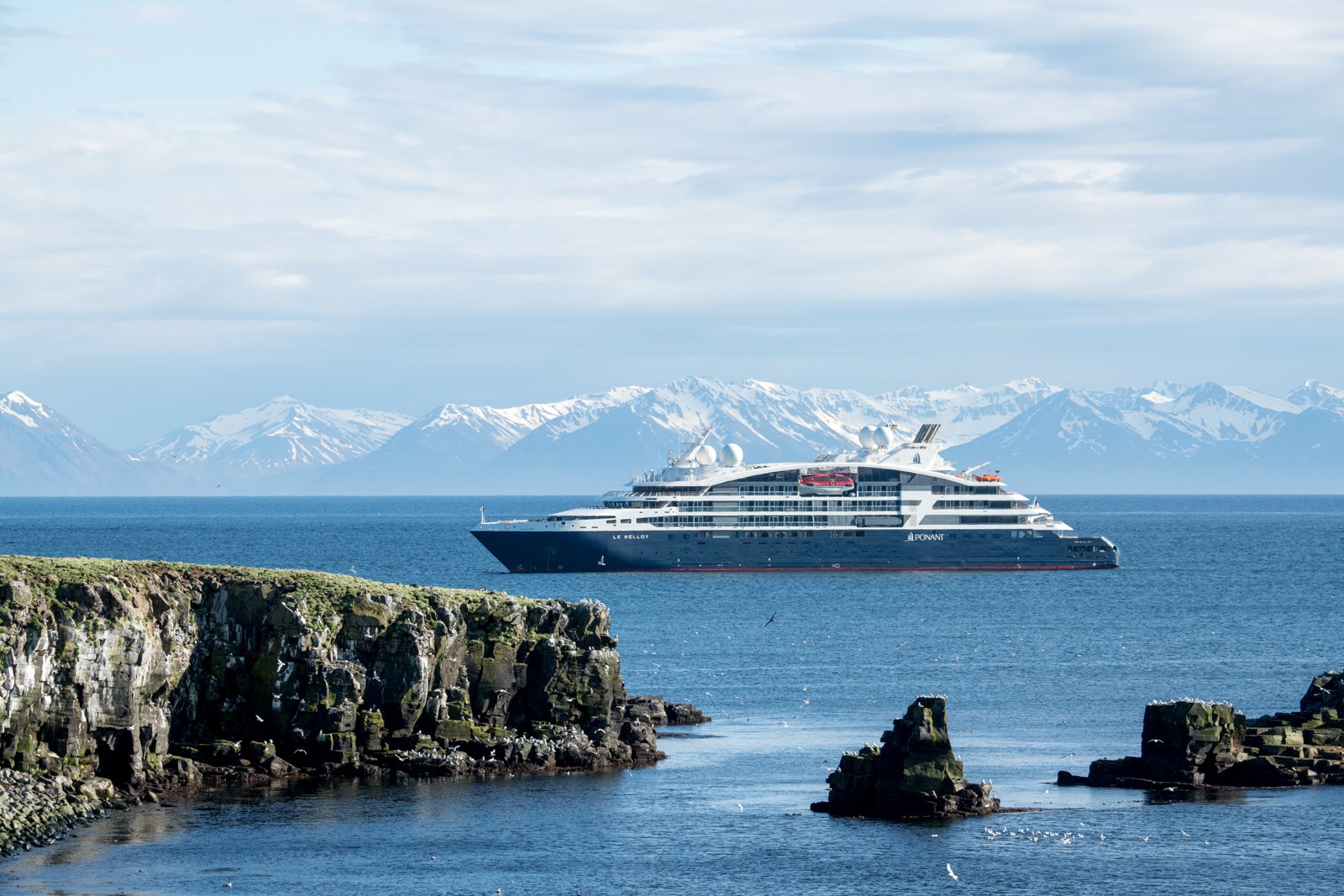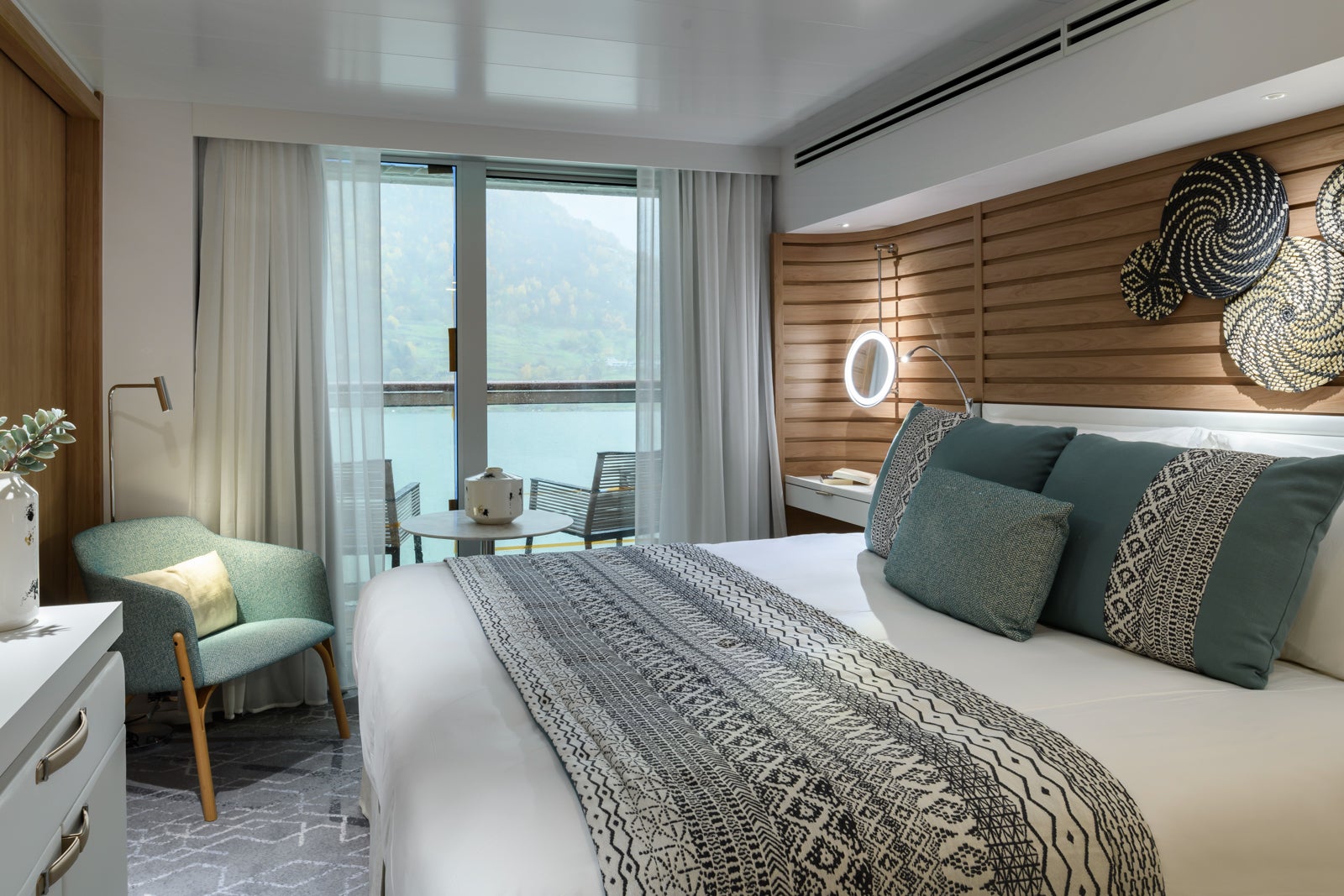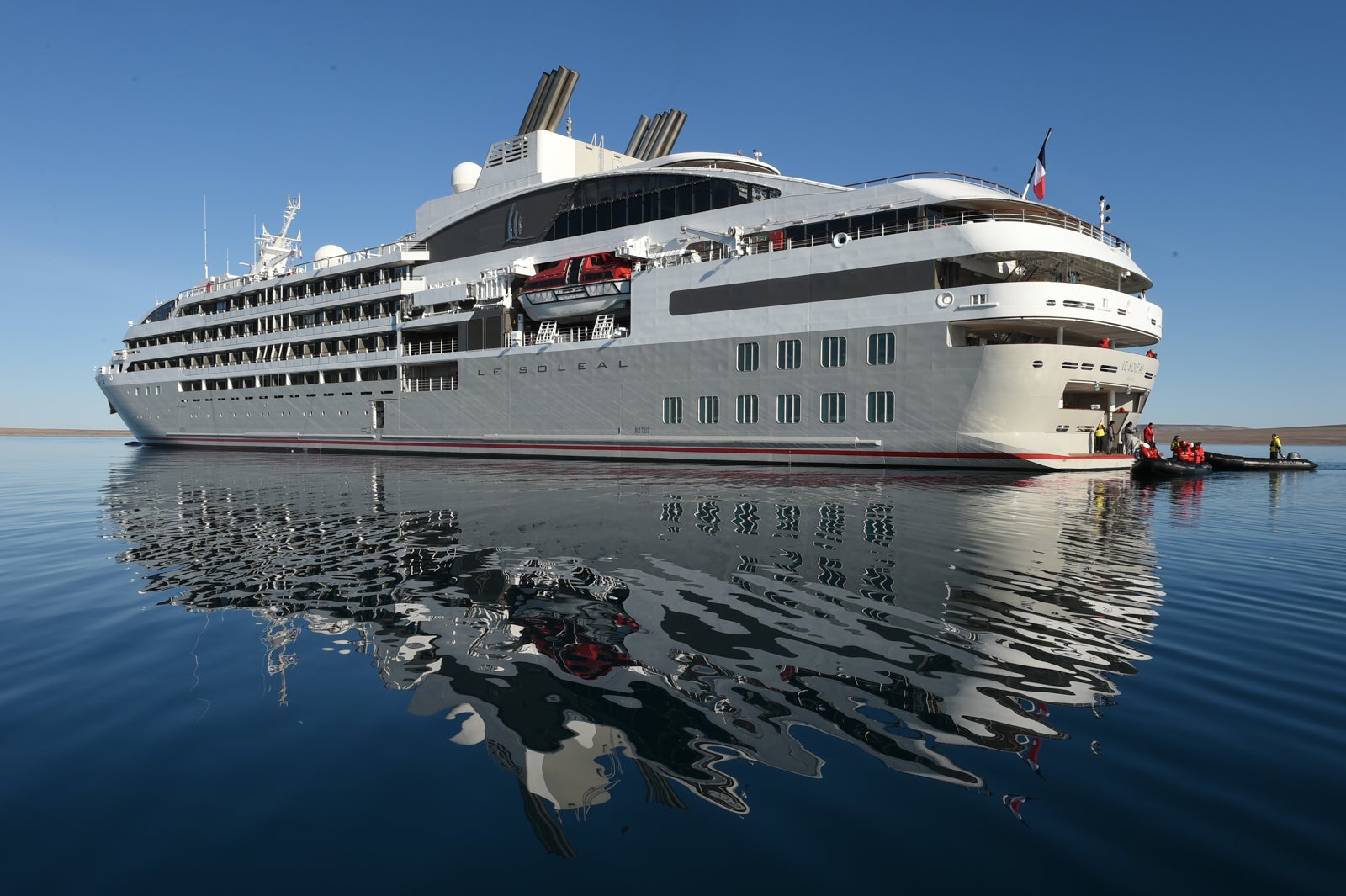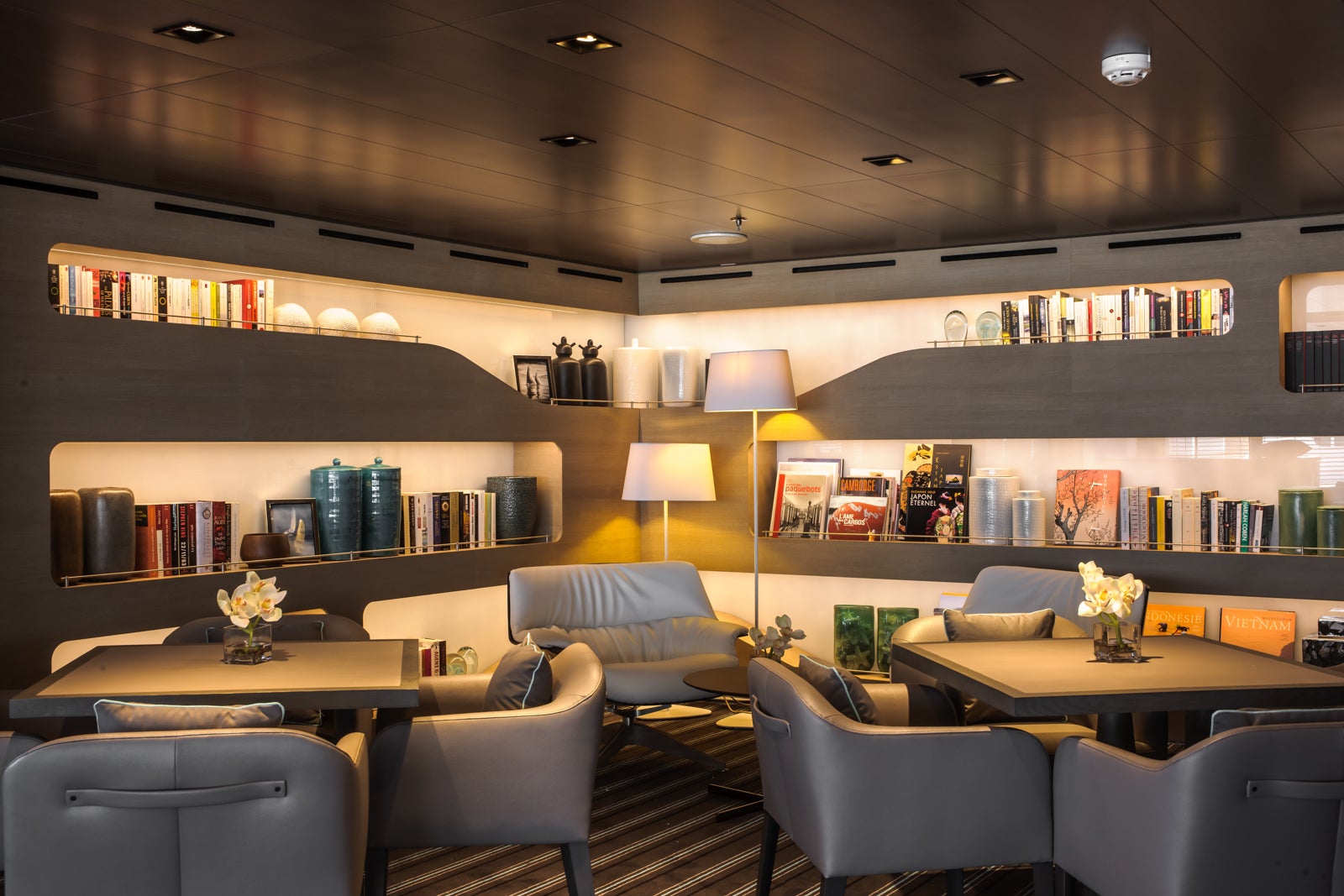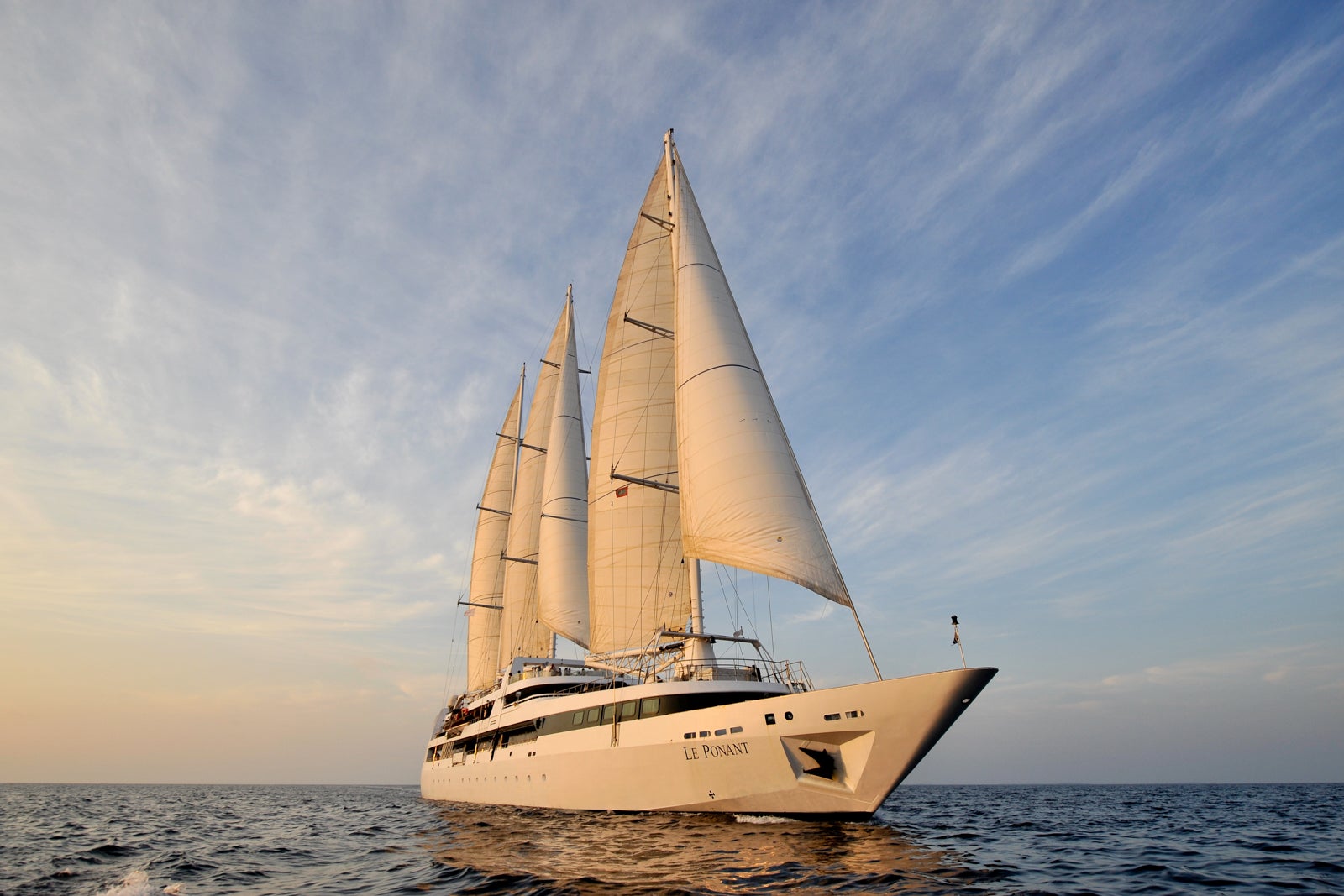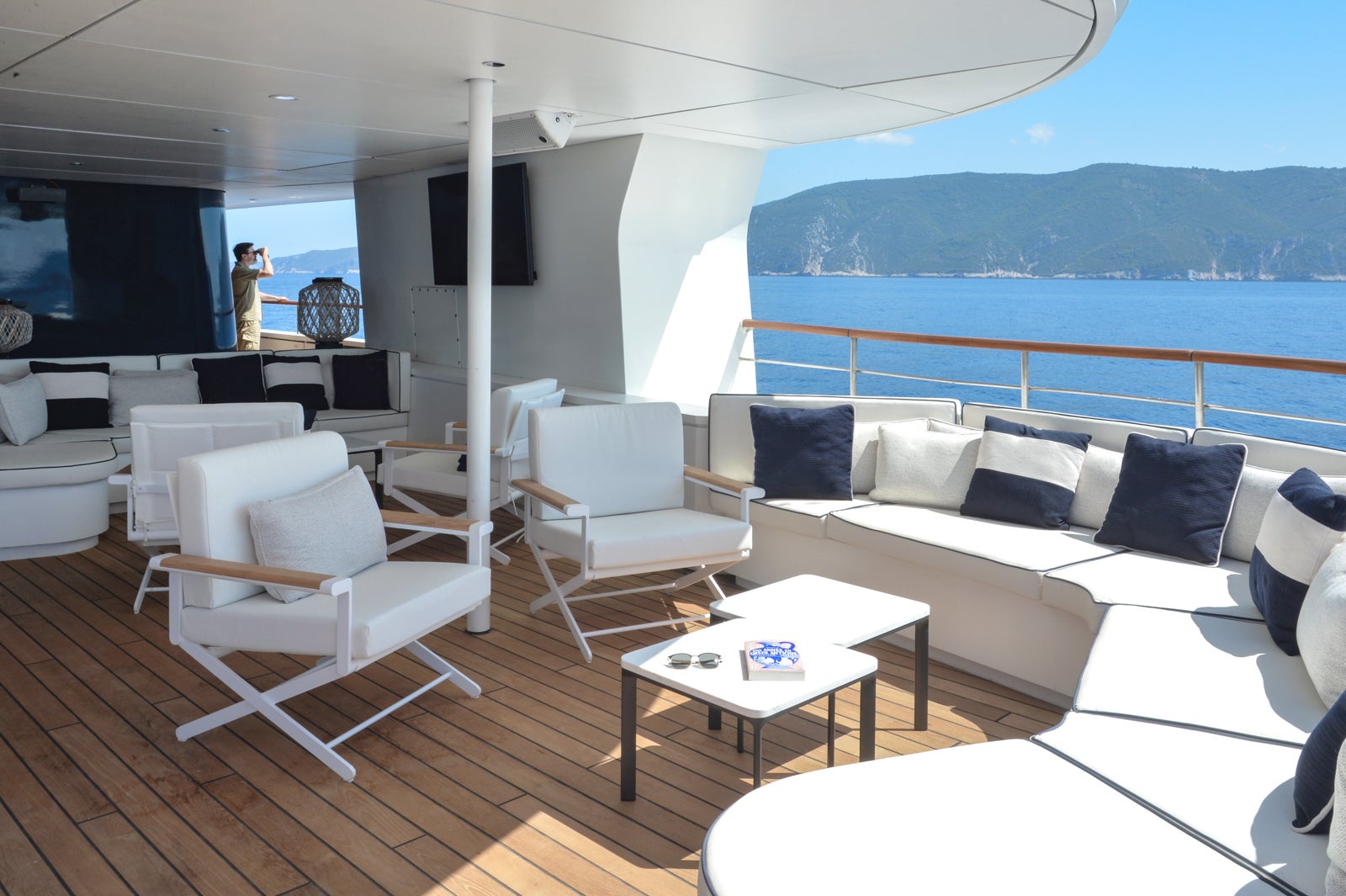Among cruise lines that focus on upscale trips, Ponant has one of the simpler fleets.
All but three of the line’s 13 vessels fall into one of just two groups: The Sisterships and the Ponant Explorer ships.
Both of these groups are made up of vessels constructed around the same time to the same basic design. If you know one member of the group, you know them all.
Additionally, Ponant operates two small sailing ships that together make up a third set of vessels, as well as a luxury icebreaker that is in a class all its own — the latter specifically built for the most adventurous trips to the world’s polar regions.
Here, we explain the distinctive features of these four types of Ponant ships so you can plan the Ponant cruise that’s right for you.
An introduction to Ponant ships
Ponant operates one of the largest fleets of small ships in the cruise world, with 13 vessels that mostly are designed to carry 184 to 264 passengers. But it wasn’t always so big.
The company, which was founded in France in 1988, spent most of its first decade operating with just one tiny vessel, the 32-passenger sailing ship Le Ponant. For another decade after that, it only added a handful of additional small vessels. But starting in 2010, Ponant began a rapid expansion that saw it add four larger, nearly identical vessels known as the Sisterships in five years.
Starting just three years later, Ponant began rolling out a second big class of six ships, Ponant Explorers, over a three-year period.
This rapid expansion in recent years has turned Ponant into one of the biggest brands in the world focused on upscale, small-ship sailings, including expedition-style cruises to some of the most remote and hard-to-reach places.

Daily Newsletter
Reward your inbox with the TPG Daily newsletter
Join over 700,000 readers for breaking news, in-depth guides and exclusive deals from TPG’s experts
Like other brands focused on upscale cruises, Ponant operates ships that are far smaller and more intimate than the giant floating megaresorts operated by the likes of Royal Caribbean, Norwegian Cruise Line and Carnival Cruise Line. At 10,944 gross tons, even its biggest ships are more than 20 times smaller than the biggest Royal Caribbean ships, for instance.
Still, while the ships are smaller than what you’ll find at a mass-market line, they’re not cramped. Indeed, the line’s newest vessels are notably spacious when measured by their space-per-passenger ratio, which is significantly higher than what you’ll find on many mass-market ships. They also operate at a higher ratio of staff to passengers than mass-market ships.
Both space-per-passenger ratios and staff-to-passenger ratios are measurements used as shorthand for the luxury level of a vessel.
Related: The 10 best luxury cruise lines for elegance and exclusivity
In general, Ponant ships are elegant and refined, often with French touches that reflect the line’s French roots. The company remains based in France and operates bilingual sailings where both French and English are spoken on board.
Polar Exploration Class
Ships in class: Le Commandant Charcot (2021)
Le Commandant Charcot is, quite simply, the toughest passenger ship ever built for expedition cruising — the type of cruising that involves traveling to the most remote and hard-to-reach places in the world.
A full-blown icebreaker of the sort that until recently only governments operated, it’s a 245-passenger expedition vessel capable of doing things that no other expedition ship currently afloat can or will ever be able to do.
What’s more, that’ll probably be the case for years to come. No other company will likely spend the enormous amount of money it took to build Le Commandant Charcot — reportedly $430 million for a ship with just 123 rooms.
Built specifically to cut through the thick multiyear ice that is found across parts of the polar ice cap, Le Commandant Charcot was notably designed with never-before-seen-in-a-passenger-ship redundancies in operating systems, emergency equipment, food storage and fuel storage that would allow it to survive long periods away from resupply and rescue.
As a result, Le Commandant Charcot can operate some of the most ambitious and adventurous expedition cruises on the planet, including the only voyages to the North Pole and epic sailings to remote parts of Antarctica that other ships can’t reach.
But it’s not just a tough ship. Ponant also wanted Le Commandant Charcot to offer passengers a level of comfort rarely seen in the expedition cruise space.
The cabins and suites on Le Commandant Charcot are among the most stylish and spacious in expedition cruising, with a sleek, contemporary feel. Among luxury touches, every cabin comes with a balcony — a rarity for expedition ships.
Among other standout features on Le Commandant Charcot is the main restaurant (Nuna), which features a menu designed by Alain Ducasse, the famed French chef. As I personally experienced during a sailing to the North Pole, it’s one of the best eateries at sea. Meals at Nuna are included in the cruise fare, and you can dine there as many nights as you like.
The ship’s spa and wellness area also offers high-end elegance. It includes an indoor saltwater pool with plush lounge chairs facing the ocean through floor-to-ceiling windows, as well as a sauna, a snow room and a salon. An onboard fitness room offers cardio machines facing the sea. A super-heated outdoor wading pool beckons at the back of the vessel.
Additionally, service on board Le Commandant Charcot is high-level. On many polar sailings, there will be the same number of crew members on the vessel as passengers — an unusually high ratio that will translate into very attentive service.
At 31,757 gross tons, Le Commandant Charcot is also unusually large for an expedition ship that often sails in polar regions with just 200 or so passengers, resulting in an enormous space-to-passenger ratio.
The Ponant Explorers Class
Ships in class: Le Jacques-Cartier (2020), Le Bellot (2020), Le Dumont-d’Urville (2019), Le Bougainville (2019), Le Champlain (2018) and Le Laperouse (2018)
These six yachtlike ships were specifically designed to travel to tropical and subtropical destinations, from the Maldives to Papua New Guinea.
Loaded with outdoor space, they each feature an innovative hydraulic marina at the back, allowing for watery playtime in warm locales (kayaks and paddleboards are available), and one of the most unusual lounges ever found at sea. Dubbed Blue Eye, the latter attraction is a curvy space below the waterline with two oversized viewing portals that let you gaze into the deep blue sea. It’s a fully immersive experience, with hull-mounted hydrophones bringing in the sound of the surrounding ocean.
Named after French explorers, the Ponant Explorers were designed both for adventurous expedition cruising in remote areas and more traditional cruising. When expedition cruising, they sail with an expedition team made up of experts in the places they are visiting and offer landings by Zodiac boats for exploring. More traditional cruises bring a choice of shore tours, some included and others for an additional cost.
As is typical for small vessels, the ships have just a handful of lounges and restaurants where passengers spend most of their time when on board.
Indoor lounges found on each of the ships include an airy space next to the pool deck with a grand piano, a dance floor and a bar, and a smaller panoramic lounge at the front of the vessel with a library and a bar.
For dining, passengers split their time between the main Le Nautilus restaurant, which serves French and European cuisine, and the more casual Le Nemo, a poolside eatery. Both offer casual dining by day and a more formal ambience at night.
The cabins on the ships — and there are only 92 per vessel — offer a chic, Scandinavian-style design. Each of the rooms, which start at 205 square feet and can go much bigger, has its own balcony.
Other onboard amenities include a small infinity pool with a counter-current system, a solarium, a spa with a salon and a sauna, and a fitness center. For entertainment, you’ll often find live music in the main lounge or dance shows in the ship’s theater. The latter venue also hosts lectures by local experts and film screenings.
At 9,900 gross tons apiece, the Ponant Explorers are notably smaller than Le Commandant Charcot and a tad smaller than the line’s four Sisterships (more details on those below). But with a maximum of just 184 passengers on board on any sailing, they feel spacious inside.
The Sisterships Class
Ships in class: Le Lyrial (2015), Le Soleal (2012), L’Austral (2011) and Le Boreal (2010)
Launched between 2010 and 2015, these four versatile sister ships were at the core of the Ponant fleet until the arrival of the Ponant Explorers, and they remain the vessels that Ponant uses for some of its most ambitious itineraries.
Built extra tough to sail into the world’s polar regions, they are the ships you’ll likely be on if you pick a Ponant voyage to Antarctica or the Arctic (unless your sailing involves a trip on Le Commandant Charcot, the line’s even hardier icebreaker). But while they often spend large portions of the year sailing in polar regions, they can sometimes be found in warmer waters, too.
One of the vessels, Le Soleal, has in recent years been spending a considerable amount of time sailing along the remote Kimberley coast of Australia, for instance, and the ships pop up everywhere from Northern Europe to eastern Canada.
At nearly 11,000 gross tons, these vessels are larger than the Ponant Explorers, though not by enough to be really noticeable. They still are many times smaller than the ships operated by mass-market brands such as Royal Caribbean. They hold 264 passengers at maximum occupancy, fewer than is typical at other upscale lines.
As noted above, they are built to be tough, with extra-strong hulls and other upgrades that allow them to bump through ice in polar regions (they all boast a 1C ice class rating from Lloyd’s Register). But they also are elegant vessels, with stylish, contemporary interiors and comfortable rooms. Think of them as upscale boutique hotels that float.
Cabins on the ships have a soothing minimalist feel, with furniture and fabrics in taupe and cream and such luxury touches as silk cushions and leather-fronted white drawers. They range in size from about 200 square feet to 484 square feet (for the Owner’s Suite, which has separate living and dining areas in addition to a bedroom). Most, but not all, have balconies.
As with the Ponant Explorers, there are two main dining venues: an elegant main dining room that can seat every passenger on the ship at once, if need be, and a more casual buffet eatery that offers both indoor and outdoor seating around the pool.
Lounging and entertainment venues include a main lounge at the back of the ship that often features live piano music and a singer and a clubby observation lounge with live piano music overlooking the bow. A small theater occasionally hosts shows and lectures.
Other public areas include a small spa with treatment rooms, a hair salon and a fitness area.
Note that the Sisterships are sometimes chartered in full or in part by high-end, U.S.-based tour companies such as Tauck and Abercrombie & Kent, which use them for all sorts of itineraries, including trips to the polar regions. If you book an ocean cruise with one of these brands, it may be that you’ll be on one of these vessels.
The Sailing Ships Class
Ships in class: Spirit of Ponant (2024) and Le Ponant (1991)
Le Ponant and Spirit of Ponant are the Ponant ships you book when you’re looking for a sailing adventure.
Much smaller than the other vessels in the Ponant fleet, with room for 32 passengers and 12 passengers, respectively, they’re both sailing ships that will let you explore classic sailing destinations from the Caribbean to the Mediterranean.
Le Ponant, dating back to 1991, is the brand’s original vessel. It offers the same sort of intimate sailing adventures that originally put the brand on the cruise world map.
Completely revamped in 2021, the three-masted, 16-cabin vessel has the feel of a large private yacht, with expansive common areas on its top deck that offer views to the horizon.
Down below, spread across three decks, the 16 cabins and suites on Le Ponant are spacious and luxurious, with either wide picture windows or portholes. Dining takes place in the stylish Le Diamant restaurant, which offers fine cuisine made with local products served with Veuve Clicquot Champagne and wines from artisanal producers in the regions the vessel visits.
Public areas include an interior lounge and bar, an exterior bar and sundeck, a small wellness area and a retractable marina for swimming and other watery fun. Related to the latter, Le Ponant sails with all sorts of toys for passenger use, from kayaks and stand-up paddleboards to scuba diving equipment and even fishing poles.
Le Ponant also sails with one crew member per passenger — an extraordinarily high crew-to-passenger ratio that results in top-notch service.
Related: From helicopters to submarines: 7 luxury adventure cruise ships you have to see to believe
With just six cabins, the just-unveiled Spirit of Ponant (which debuted in 2024) is an even more intimate offering. Only available for booking as a private charter, the double-hulled catamaran offers bespoke sailings that Ponant will custom design to your tastes.
Bottom line
Ponant offers a large fleet of small vessels built for adventure around the world. Most of its ships are part of two large series of ships that are similar in their elegant, upscale feel but differ in the sort of destinations that they visit.
The line’s four Sisterships are the vessels you’ll likely be aboard if you’re traveling to a polar region, while its six more recently built Polar Explorers Class vessels often focus more on tropical and subtropical itineraries. In addition to these ships, Ponant operates three unique vessels — two small sailing vessels and the only luxury icebreaker in the world — that are highlights of the brand’s fleet.
Planning a cruise? Start with these stories:
